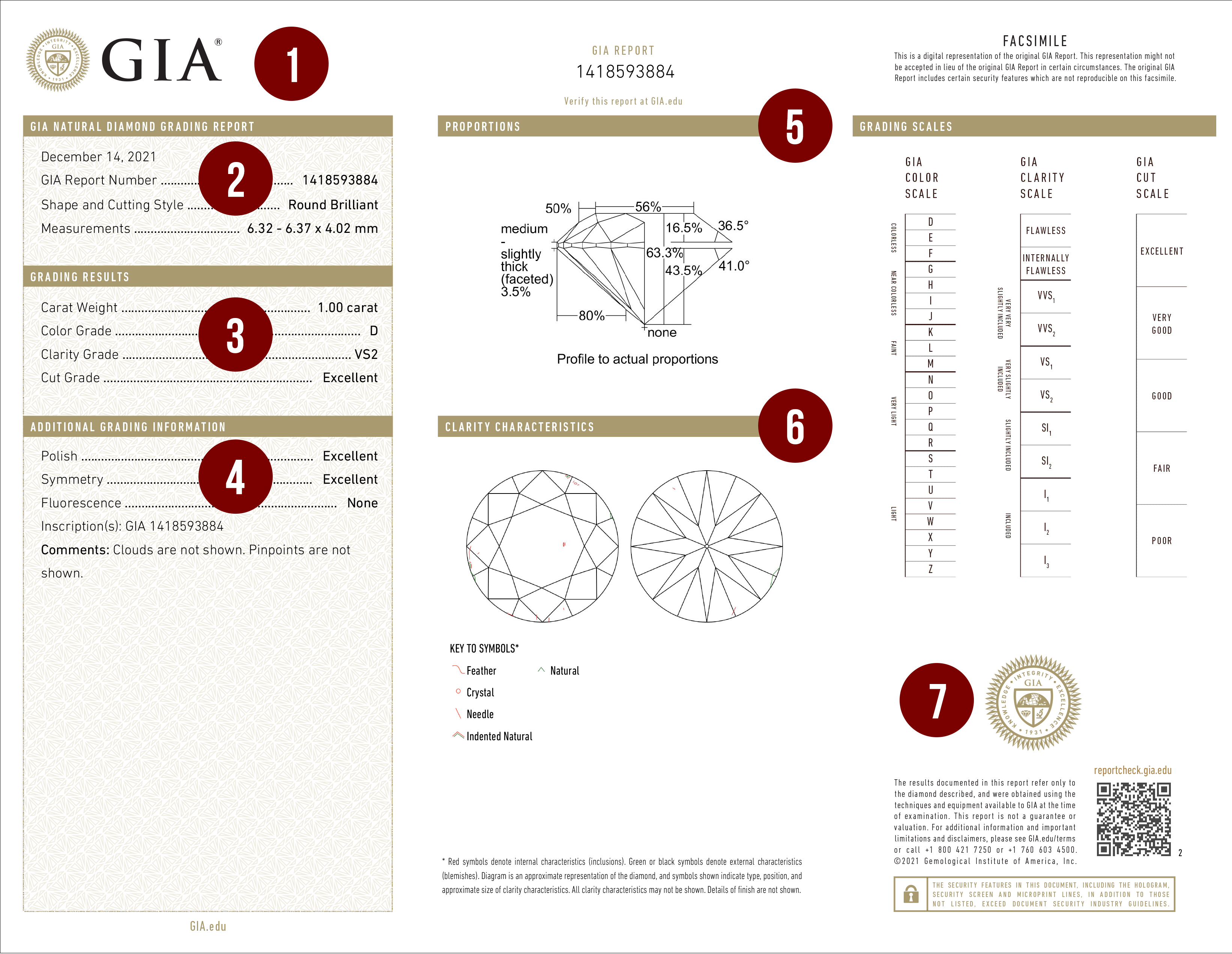Reading GIA Diamond Certificates - Becoming Proficient in Choosing Authentic Diamonds

Reading diamond certificates from GIA is a crucial step in selecting genuine diamonds. GIA certificates, also known as GIA diamond certificates, are the hallmark of diamonds that meet the highest standards set by GIA for quality and accuracy. The key aspect of this certificate is evaluating diamond quality by specifying the shape, cut, clarity, and weight. If a diamond has a GIA certificate, it signifies that the diamond has undergone meticulous examination, ensuring your confidence in the value and quality of the diamond you choose.
Analyzing GIA Diamond Certificates
1. GIA Institutional Logo
GIA certificates bear the logo of the GIA diamond institution at the top. This logo symbolizes accuracy and credibility because GIA is a leading organization that establishes global diamond standards.
2. Certificate Number and Diamond Details
The GIA certificate number is the identifier for each individual diamond, including the examination date and year. This number can be cross-referenced with GIA's database to verify its accuracy. It also specifies details to identify the shape and size of the diamond, informing you of its type.
3. Diamond Characteristics - The 4Cs
This section details the essential characteristics of the diamond. In the weight section, the carat weight is indicated, along with the color grade specifying which grade the diamond falls into. It starts from grade D, the best color grade, to FANCY grades, showcasing a variety of colors. Additionally, the clarity grade of the diamond is identified, ranging from FL (Flawless) with no inclusions to I3 with significant inclusions. The section concludes with the diamond's cut quality, arranged from Excellent to Poor.
4. Additional Information and Notes
This part provides additional information about the diamond, such as the arrangement of light within the diamond, diamond symmetry, and surface smoothness. All of these elements contribute to the diamond's beauty and value, referred to as diamond brilliance. Additionally, the GIA utilizes a 10-digit diamond code to identify diamonds, ending with a description from GIA.
5. Diamond Proportions
In this section, you'll find information about various proportions of the diamond, including Table % (width of the top facet), Depth % (depth), Angles (various angles), and Girdle Thickness (thickness of the edge of the diamond). These proportions are presented as percentages, helping you understand the diamond's characteristics.
6. Diagram Showing Diamond Inclusions
This section displays a diagram of diamond inclusions for diamonds weighing 1 carat or more. This diagram illustrates potential flaws on the surface or inside the diamond. External flaws are indicated in green, while internal flaws are indicated in red.
7. Anti-Counterfeiting Mark
The final section on the GIA certificate is the anti-counterfeiting mark from GIA, assuring you that the diamond you received is of quality and adheres to the standards.





